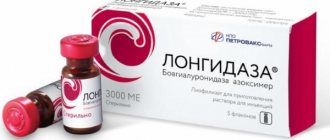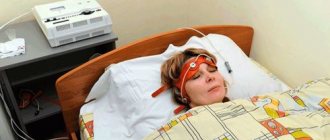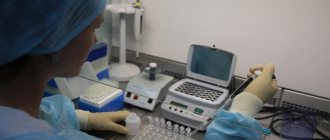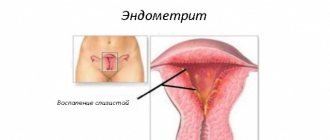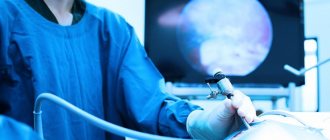In this article we will try to understand what it is - physiotherapy in gynecology. Among the measures to combat gynecological diseases of the female reproductive system, physiotherapy occupies a special place. In most cases, the healing properties of physiotherapy are used to eliminate chronic and acute pathological conditions.
However, the complex of physiotherapeutic panacea is effective during preparatory measures preceding surgical intervention or subsequent to surgical procedures. In addition, it is relevant during pregnancy and the postpartum stage. This is due to the creation of maximum utility against the background of almost no harm to the body.
Indications
- cracked nipples;
- lactation mastitis;
- vulvitis;
- vaginitis;
- vulvovaginitis;
- bartholinitis;
- colpitis;
- cervical erosion;
- inflammatory diseases of the uterus, appendages, as well as the pelvic peritoneum and tissue in the acute and chronic stages;
- functional ovarian cysts during remission;
- dysfunctional uterine bleeding;
- weakness of labor;
- menstrual dysfunction not accompanied by bleeding;
- endocrine syndromes in gynecology;
- painful menstruation;
- recovery after gynecological operations;
- recovery after termination of pregnancy, treatment for miscarriage;
- preparation for IVF.
Physiotherapy can reduce the treatment time for diseases, helps in cases of ineffectiveness of other treatment methods (for example, during the occurrence of chronic pelvic pain due to adhesive disease), reduces the recovery time after surgical interventions, and is also used in the prevention of complications and relapses.
Contraindications to physiotherapy
Contraindications to physiotherapeutic procedures are:
- cysts;
- endometriosis;
- malignant, benign formations;
- bleeding;
- fever;
- the patient's serious condition;
- cachexia;
- mental illness in the acute stage;
- menstruation period;
- acute renal and liver failure;
- purulent pathologies;
- genital tuberculosis;
- urolithiasis disease.
Why is it worth undergoing physiotherapeutic treatment at the Clinic of Innovative Technologies?
- We provide comprehensive treatment: we select not only physiotherapeutic procedures, but also medications.
- We trust treatment to doctors with over 20 years of experience. Over the years, our gynecologists have helped hundreds of patients.
- We make appointments for gynecologist consultations and procedures online in advance so that you can come to the clinic at a convenient time and not wait in line.
To consult with a gynecologist or immediately sign up for the desired physiotherapy procedure, fill out the form on the website.
Physiotherapy during pregnancy
The use of physical treatment factors during pregnancy is completely justified and safe.
Physiotherapy is prescribed for toxicosis, uterine hypertonicity, and weakness of labor. Exposure to physical factors allows you to refuse to prescribe pharmacological drugs or significantly reduce their dosage, as well as avoid the development of side effects of medications.
In the postpartum period, physical treatment is also important, since very often the formation of lactation is accompanied by the occurrence of mastitis. In addition, physical therapy is indicated in the recovery period after cesarean section, to stimulate the healing of sutures after episiotomy and ruptures.
Factors applied
The prescription of physiotherapeutic procedures must correspond to the existing deviations and be carried out in accordance with the therapeutic effects of physical factors and their mechanisms of action.
Magnetic therapy is actively and successfully used in the postoperative period.
For pain relief and vascular spasm relief, electro- and ultrasound therapy are prescribed.
Ultrasound therapy is used to stimulate the hormonal function of the ovaries. Ultrasound and electrophoresis with enzyme preparations are used to resolve and soften adhesions.
For inflammatory pathologies with bacteriostatic and bactericidal functions, ultraviolet irradiation is prescribed.
Infrared irradiation has a deep warming effect and is used for indolent inflammatory diseases.
Electro-, magneto-, and ultrasound therapy are used to improve blood circulation.
Laser therapy has a pronounced repair and regeneration effect, stimulates cellular immunity, but is not used during pregnancy.
Electric or magnetic fields are prescribed for anti-inflammatory and decongestant purposes.
Natural factors in the form of mineral waters and mud are used in the treatment of many gynecological pathologies, since the mineral composition and biologically active substances have a powerful beneficial effect on the entire body.
Thermal procedures in the form of paraffin and ozokerite treatment can cope with pain syndrome, as well as stimulate the hormonal function of the ovaries.
Treatment sessions are carried out both transcutaneously, that is, through the skin, and by the cavity method.
Through the skin, the procedure is carried out by affecting the abdomen, lower back, inner thighs, and perineum. The abdominal technique is performed transvaginally or transrectally. Sessions are prescribed from days 5-7 of the menstrual cycle, which is associated with ovulation. Massage is used to improve blood circulation and normalize muscle tone. During pregnancy, due to the increasing load on the spine, women are often bothered by pain in the cervical-collar region and back. In this situation, it is possible to prescribe a massage to these departments.
In the postpartum period, massage improves the tone of the uterus, helping it restore its previous size in a short time, and restore the tone of the muscles of the anterior abdominal wall. Also, in the early postpartum stage, it is recommended to massage the breasts before feeding to increase lactation.
I consider it necessary to touch upon gynecological massage. This separate technique of influencing the female reproductive system is performed with the aim of improving blood circulation, increasing sexual desire, softening and stretching adhesions, normalizing hormonal levels, menstrual function, increasing metabolism, increasing the possibility of pregnancy, and normalizing the psycho-emotional background. This type of influence has an important function, but at the moment, for some reason, it is rarely used; treatment is carried out by a gynecologist or independently (after training by a doctor).
What methods are used
There are many methods of physiotherapy:
UHF and EHF
Physiotherapy using an electromagnetic field affects inflammatory processes and has an anti-edematous effect. Electrotherapy or ultrasound therapy is usually used.
Ultrasound
Ultrasound is used due to its beneficial effects at the cellular level. The massage causes a feeling of warmth inside, and also reduces pain, softens adhesions, affects blood circulation and improves hormonal levels.
Electrophoresis
This type affects spasms and smooth muscles, improving blood circulation and providing an analgesic effect. The following are commonly used: electrical stimulation, galvanization and medicinal electrophoresis.
Magnetotherapy
Magnets in gynecology are used to improve microcirculation in the fallopian tubes and appendages. Affects the amount of discharge during the menstrual cycle.
After therapy, pain sensations decrease sharply.
Magnetic therapy is performed using a sensor. The treatment course is about 15-20 days.
Electrophoresis in gynecology is used quite often
Laser therapy
Laser therapy is considered the most effective among all immunostimulating and regenerative therapies. Used in gynecology for irradiation of the vulva in women aged 45 years or more in case of atrophic vulvovaginitis. Used to combat infertility and increase the chances of conception.
The whole point is to stimulate the regenerative functions of the epithelium in the genital organ, thereby improving blood flow and reducing scabies. The symptoms of crourosis and lichen are relieved. Modern medicine offers a new procedure - extravascular laser irradiation. Irradiation occurs in the area of the main vessels, thereby providing an immunomodulatory effect to reduce inflammatory processes. Effectively fights adhesions, adnexitis, endomatritis, and oophoritis.
Laser therapy affects local immunity due to the synthesis of leukocytes in the desired location. Due to this, the metabolic process in the skin is normalized.
Other methods
Other methods are also used for the prevention and treatment of gynecological diseases. They are divided into two types:
- Natural. They include various mud treatments and water procedures. Usually carried out in sanatoriums and beauty salons.
- Manual gynecological procedures.
This video will tell you about the features of using physiotherapy for pelvic diseases:
Other non-drug methods
Exercise therapy
Physical therapy exercises are useful for women during pregnancy, after childbirth and during the treatment of various diseases of the genital organs.
The use of physical therapy for gynecological diseases, as well as during pregnancy and after childbirth, helps resolve the pathological process, prevents the occurrence of complications, eliminates residual effects of pathology, or is used for preventive, general strengthening purposes.
During pregnancy, exercise therapy helps the female body adapt to constant changes, as well as to the subsequent period of childbirth. If necessary, physical therapy can be used to correct the position of the baby in the uterus.
In the postpartum period, physical therapy is necessary to restore the body after pregnancy and childbirth, return to normal functioning and its previous appearance, and restore the normal location of internal organs.
Special exercise therapy techniques help improve bowel movements during and after pregnancy, as well as strengthen the pelvic floor muscles after childbirth and improve lactation.
Acupuncture
It allows you to stimulate the immune system and normalize a woman’s hormonal levels, the disruption of which is often the cause of gynecological pathologies. During pregnancy, acupuncture helps to cope with toxicosis, and also eliminates gestosis and threats of miscarriage. In the postpartum period, using this method, you can increase lactation and normalize the functioning of other organs and systems.
Hirudotherapy
The medicinal leech is included in the register of medicines of the Russian Federation; this type of worm is grown in special biofactories.
Therapeutic effects of hirudotherapy: rejuvenation, strengthening the immune system, pain relief, anti-inflammatory effect, etc.
The leech has several mechanisms of action. By sucking in the area of biologically active points, it can perform reflexology tasks. At the moment of a bite, a huge amount of biologically active substances enter the patient’s bloodstream, which have a multifaceted effect on the body. In addition, a kind of bloodletting that occurs during and after the procedure stimulates the renewal of blood and lymph, which is very beneficial for the body.
Hirudotherapy is used for endometriosis, uterine fibroids, ovarian dysfunction, polyps, endometritis, adnexitis, salpingoophoritis, vulvovaginitis, bartholinitis, mastitis, after surgery, during pregnancy, after childbirth.
This method of treatment is contraindicated for hemophilia, malignant tumors, implants in the body, and individual intolerance.
Physiotherapy in practical gynecology: pathologies, methods, pros and cons of procedures
Most often, physiotherapy in gynecology is used as therapeutic measures. But no less effective is the use of physical procedures as a preventive measure, as well as as a measure to promote the restoration of a woman’s body after childbirth or surgical interventions.
Principles of physiotherapy in gynecology
There are several principles for the use of physiotherapeutic methods in gynecological practice:
- the diagnosis must be fully clarified and confirmed by examinations;
- an individual approach to the choice of physical intervention in each individual clinical case;
- when carrying out physiotherapeutic treatment, it is important to take into account not only the condition of the organ being treated, but also circadian rhythms, the menstrual cycle, the functional activity of the ovaries and other nuances;
- maintaining consistency in procedures if they are performed simultaneously with others or in combination;
- mandatory monitoring of the dynamics of changes both during and after the end of physiotherapy.
Indications for the use of physiotherapy in gynecology
Since the main direction of use of physiotherapeutic methods is therapeutic, the indications will be various female diseases, for example:
- inflammatory processes in the tissues of the internal and external genital organs (endometritis, bartholinitis, vulvitis and others);
- menstrual cycle disorders (dysmenorrhea, amenorrhea);
- atrophic processes (for example, associated with menopause, uterine prolapse);
- problems with conception (infertility) and bearing a child;
- the presence of adhesions;
- pain in the pelvic organs and many others.
Physiotherapy in gynecological practice is part of a set of rehabilitation measures after curettage (abortion or performed for diagnostic purposes), operations, including cesarean section, removal of the uterus. In some cases, physical methods are used for an analgesic effect during childbirth, during preparation for IVF, when it is impossible to get pregnant, in patients with a history of miscarriages or other pathologies.
Only a doctor can choose one or another method of physiotherapy and draw up a treatment plan.
Contraindications
Despite the many advantages of physical therapy, there are contraindications for its use in gynecology. They are divided into general ones, characteristic of all physiotherapeutic types of influence, and inherent in each technique separately.
| Are common | In gynecology |
| Tuberculosis in active form Feverish state Kidney and liver failure AIDS Hepatitis Exacerbation of viral diseases Circulatory failure Malignant tumors Diseases in the acute stage Blood diseases Mental disorders Alcohol, drug addiction Severe condition of the patient | Cysts, ovarian tumors, including benign Hormonal disorders STDs Purulent processes in the pelvic organs and so on Uterine bleeding |
Basic physical procedures in gynecology
Based on a preliminary study of the medical history and diagnostic measures performed, the gynecologist prescribes one or another type of physical therapy.
It often happens that a woman is shown several methods at once, which can be used together or in combination (alternately). Various methods of physiotherapy have been used in gynecological practice.
Below is a brief description of the procedures that are prescribed most often and have proven to be the most effective.
Ultrasonic exposure
Ultrasound, or UT (ultrasonic therapy), leads to vibrations in tissues at a microscopic level. Among the effects are:
- reduction of swelling;
- increased blood circulation;
- reducing the intensity of the inflammatory process;
- elimination of pain;
- preventing the formation of adhesions in the postoperative or recovery period (especially in combination with electrophoresis).
Ultrasound therapy is performed both superficially in the lower abdomen and vaginally.
Electromagnetic field therapy
The action of electromagnetic fields of different frequencies is used in gynecology through the use of techniques such as UHF and EHF.
It manifests itself in the heating of tissues, as a result of which blood flow in the pathological area increases, metabolism accelerates, pain disappears, and regenerative and local immune processes are activated.
These techniques are successfully used in the chronic form of certain inflammatory processes, for example, adnexitis.
Laser beam treatment
The physiotherapeutic effect of a laser beam for gynecological diseases and disorders has a strong regenerating and immune-stimulating effect. In addition, the laser helps reduce itching, renew epithelial cells during atrophic processes associated with age-related changes, and improve blood circulation in the external and internal genital organs of a woman.
Electrical impulse therapy
Electrical pulse therapy (EPT) is used to normalize the functional activity of the reproductive system organs.
Most often, pulsed currents are directed to the area of the cervix, from where they are transmitted through neural connections to the corresponding parts of the central nervous system.
The result is a reflex production of active compounds that restore and regulate the functioning of the reproductive system. Among the indications for the use of this physiotherapeutic technique are:
- early onset of menopause;
- menstrual disorders;
- insufficient activity of the appendages;
- infertility;
- uterine hypoplasia;
- weak labor activity.
Electrical pulse therapy is used during childbirth to stimulate uterine contractions in the preparatory period.
Hydrotherapy in gynecology
Various water procedures are widely used in gynecological and obstetric practice:
- baths and trays with minerals, turpentine, plant extracts, medicinal ingredients;
- souls (Charcot, circular);
- vaginal irrigation.
Local treatment is indicated for pathologies of the cervix, inflammatory processes in the vagina and in the tissues of the external genitalia. General procedures are indicated during pregnancy, menopause and other conditions in which disorders of the nervous system, sleep problems, development of swelling, and so on are observed.
Peloid therapy
Mud treatment is deservedly popular among women with gynecological disorders. The medicinal composition can be applied locally, to the lower abdomen, or applied to the entire body.
In some cases, it is possible to insert mud tampons into the vagina, for example, for diseases of the cervix. A greater effect is achieved by combining peloid therapy with thermal procedures, ultrasound, and electrophoresis.
This combination enhances the penetration of biologically active compounds to the site of pathology.
Physiotherapy for menstruation
One of the principles of using physiotherapeutic methods in gynecology is taking into account the characteristics of a woman’s menstrual cycle.
What day is best to start treatment? The optimal time to start a course of physiotherapy is 5-7 days from the first day of menstruation. In most cases, by this time, women will stop bleeding.
If the patient suffers from amenorrhea, then one should focus on premenstrual sensations. If they are not present, then the time of initiation of therapy does not matter.
Why do you need to pay attention to the menstrual cycle during physiotherapy for gynecological disorders? The fact is that as a result of clinical studies, the following was noted: if the start of a course of physical procedures occurs at the time of ovulation or immediately before menstruation, then the likelihood of a negative response from the body increases significantly. This may manifest itself as increased pain or pain of varying intensity. Moreover, pain in this case does not indicate the development of the inflammatory process, but is only its imitation.
In the second half of the menstrual cycle, physiotherapeutic procedures are not recommended, since during this period there is a high probability of pregnancy. Physiotherapeutic influence can lead to its interruption.
Of particular note is the conduct of physiotherapy sessions on menstrual days.
In this case, the specialist is required to carefully monitor the response of the woman’s body, which may manifest itself as increased bleeding.
If this occurs, the patient should report this fact to the physiotherapist. Reducing the energy impact will help return the volume of menstrual flow to normal; cessation of physical therapy is not required.
It’s another matter if, during physical impact, along with an increase in the volume of blood released, the release of clots is observed.
This phenomenon may indicate existing pathologies that have not yet manifested themselves with characteristic symptoms.
These are: fibroids, degenerative processes in the endometrium and its growth, the presence of polyps and other diseases. In this case, the use of physical therapy should be discontinued.
Menstruation is not a contraindication to the use of physiotherapeutic methods, including transvaginal ones. However, in this case, before carrying them out, you need to consult a gynecologist.
Physiotherapy during pregnancy
During pregnancy, the use of physical methods is indicated for the treatment of gynecological diseases, auxiliary measures in preparation for childbirth, and in the postpartum period. Despite the fact that not all methods of physical therapy can be used when carrying a child, many methods are absolutely safe for mother and baby.
In addition, physical therapy can often replace drug treatment, since the latter have side effects and can adversely affect the condition of the fetus. Transdermal administration of drugs makes it possible to avoid negative consequences and stop taking medications.
Physiotherapeutic procedures in gynecology and obstetrics during pregnancy are indicated for toxicosis, increased tone of the muscular wall of the uterus, to stimulate and facilitate labor, for some diseases that require immediate treatment, and so on.
In the postpartum period, the use of physiotherapy promotes faster healing of sutures in the case of cesarean section or perineal ruptures. Some methods accelerate uterine contractions and have an anti-inflammatory effect. Moreover, physiotherapeutic effects prevent the development of mastitis, which often accompanies the initial stage of breastfeeding.
Advantages and disadvantages of physiotherapy in gynecology
The benefits of using physiotherapy in gynecology and obstetric practice are as follows.
- No adverse reactions. With a correctly selected treatment regimen and taking into account the woman’s individual characteristics and contraindications, physiotherapy practically does not lead to negative reactions from the body (especially when compared with medications) and does not cause harm.
- Affordable price. All basic physical procedures can be completed at the clinic at your place of residence. Paid treatment will be inexpensive, and if you have a referral from a doctor, you won’t have to pay anything. Sometimes it may be necessary to purchase a drug. But in most cases, inexpensive products are used for physical procedures.
- Speeding up recovery. Used as an additional treatment, physiotherapy enhances the therapeutic effect of medications, and can also significantly reduce their amount. Physical methods significantly shorten the recovery period, reducing the risk of complications.
- High degree of efficiency. Many patients are skeptical about physical therapy, not seeing significant “visible” effects, especially after the first sessions. However, numerous studies prove the opposite - the procedures are very highly effective. To do this you need to undergo a full course of treatment.
Physiotherapeutic procedures have virtually no disadvantages. We can only note the need for regular visits to a medical facility. Since almost all such centers and clinics provide services during the daytime, it is not easy for working patients to get to the session on time.
The use of physiotherapy in gynecology is considered an important direction in the treatment of diseases.
Many gynecological disorders are difficult to respond to the effects of drugs, for example, adhesions in the tubes, chronic pain in the lower abdomen, chronic inflammatory processes and others.
Therefore, very often the prescription of physical treatment methods becomes the only means of getting rid of pathologies and their prevention.
Source: https://phisioterapia.ru/lechenie/fizioterapiya-v-ginekologii/

